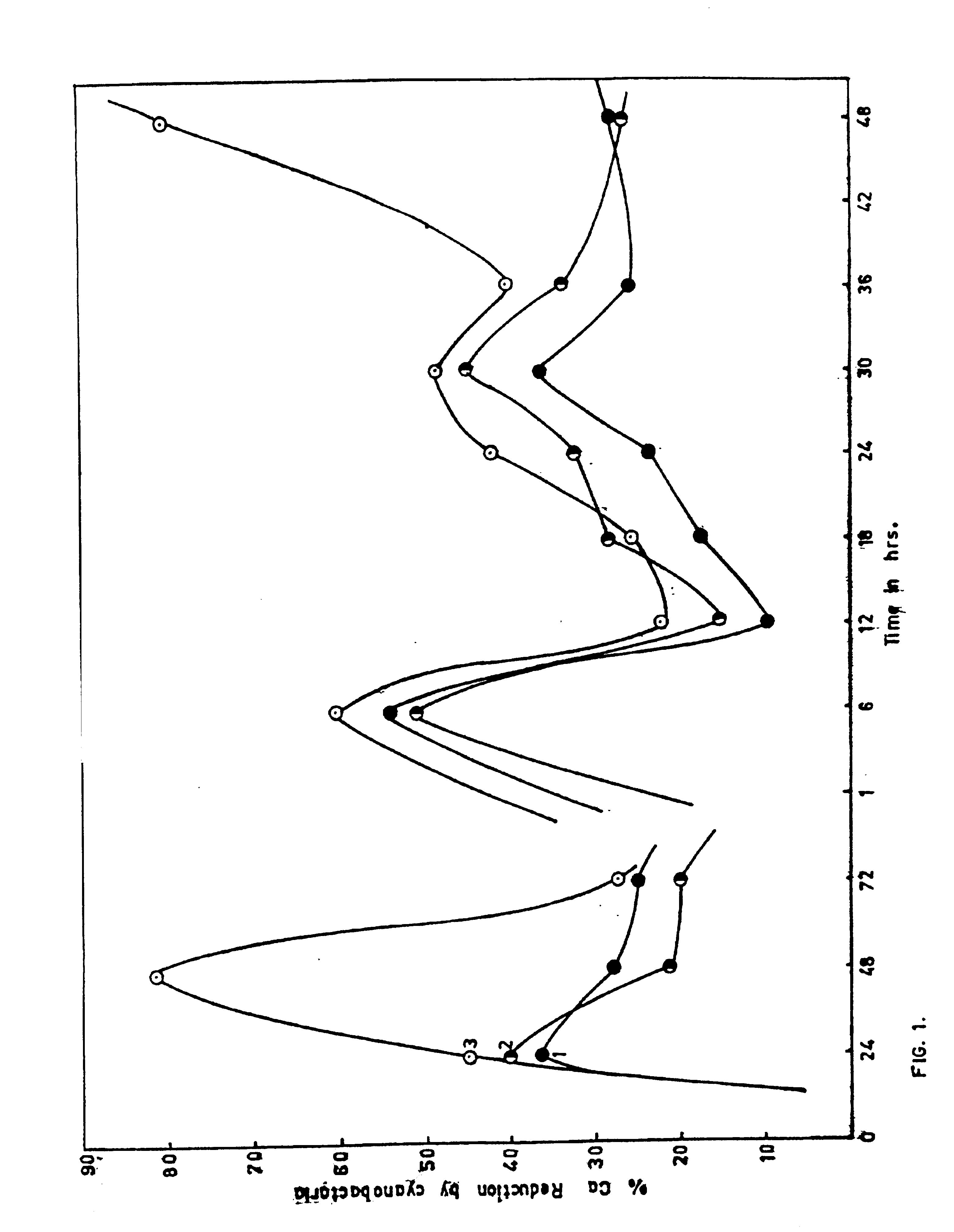Process for the removal of calcium ions from the brine by marine cyanobacteria
a technology of cyanobacteria and brine, which is applied in the direction of microorganisms, biochemical apparatus and processes, biological water/sewage treatment, etc., can solve the problems of brine requiring a prior chemical treatment to reduce the calcium and magnesium content, uneconomical and unfavorable processing, time-consuming and costly, etc., and achieves the effect of increasing biomass, cost-effective and practical method of producing calcium-free brin
- Summary
- Abstract
- Description
- Claims
- Application Information
AI Technical Summary
Benefits of technology
Problems solved by technology
Method used
Image
Examples
example-2
A known volume (500 ml) of sea brine collected from the coast of Bhavnagar District, Gujarat, India, which had a density of 11.5.degree. Be', calcium content of 0.0603% and a total dissolved solids of 1,20,000 ppm was taken in a cotton plugged conical flask. This brine was inoculated with 4.0 gms of fresh Lyngbya (cyanobacteria) and kept in static condition for 24 hours at 30.degree. C. temperature. After the stipulated time, 50 ml of brine was withdrawn, filtered completely free from cyanobacteria and the calcium content was estimated by complexometric titration.
example-3
A known volume (500 ml) of sea brine collected from the coast of Bhavnagar District, Gujarat, India, which had a density of 11.5.degree. Be', calcium content of 0.0603% and a total dissolved solids of 1,20,000 ppm was taken in a cotton plugged conical flask. This brine was inoculated with 4.0 gms of fresh Anabaena (cyanobacteria) and kept in static condition for 24 hours at 30.degree. C. temperature. After the stipulated time, 50 ml of brine was withdrawn, filtered completely free from cyanobacteria and the calcium content was estimated by complexometric titration.
example-4
A known volume (500 ml) of sea brine collected from the coast of Bhavnagar District, Gujarat, India, which had a density of 11.5.degree. Be', calcium content of 0.0603% and a total dissolved solids of 1,20,000 ppm was taken in a cotton plugged conical flask. This brine was inoculated with 4.0 gms of fresh Synechocystis (cyanobacteria) and kept in static condition for 24 hours at 30.degree. C. temperature. After the stipulated time, 50 ml of brine was withdrawn, filtered completely free from cyanobacteria and the calcium content was estimated by complexometric titration.
PUM
| Property | Measurement | Unit |
|---|---|---|
| contact time | aaaaa | aaaaa |
| concentration | aaaaa | aaaaa |
| concentration | aaaaa | aaaaa |
Abstract
Description
Claims
Application Information
 Login to View More
Login to View More - R&D
- Intellectual Property
- Life Sciences
- Materials
- Tech Scout
- Unparalleled Data Quality
- Higher Quality Content
- 60% Fewer Hallucinations
Browse by: Latest US Patents, China's latest patents, Technical Efficacy Thesaurus, Application Domain, Technology Topic, Popular Technical Reports.
© 2025 PatSnap. All rights reserved.Legal|Privacy policy|Modern Slavery Act Transparency Statement|Sitemap|About US| Contact US: help@patsnap.com

